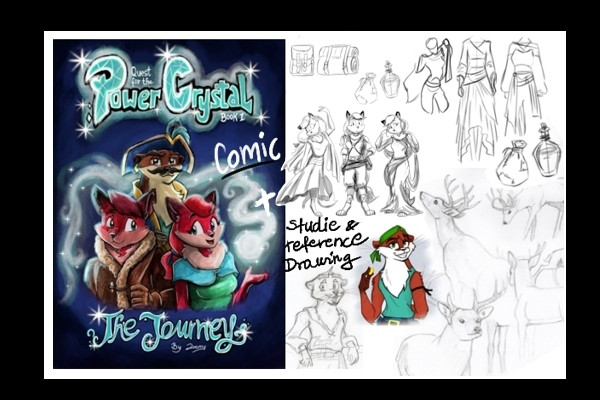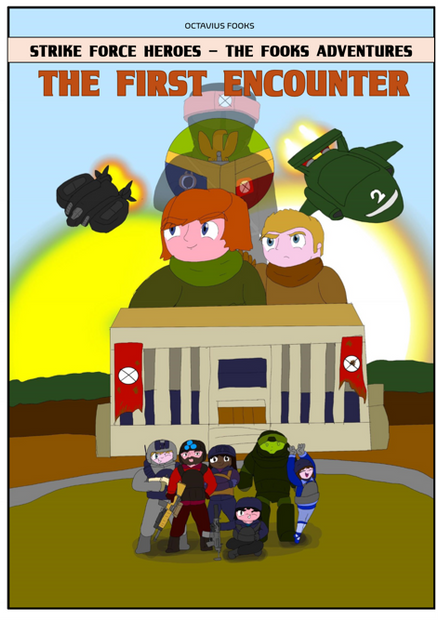HOME | DD
 Soulsplosion — [Scourge Files] Retrodon
Soulsplosion — [Scourge Files] Retrodon

Published: 2017-06-03 18:10:11 +0000 UTC; Views: 4682; Favourites: 274; Downloads: 17
Redirect to original
Description
Name: Retrodon"Camel Dragon"
A migratory, omnivorous draconic species living in the sparse forests around the Desert Region.
Physique: Aside from Wyrms and Scourge's deity itself, Retrodons are one of the heaviest flying creatures in Scourge. Females are much larger than the males, standing at 9 1/2 feet at eye level (compared to males at 6 1/2 feet); their bodies are muscled and have heavy deposits of calories to suffice for their migratory lifestyle, along with massive spikes along their tail used for excavating subterranean pray.
These dragons walk like wyverns using wings as their front legs, while their actual forelimbs are held as arms near their chest--without the wings, this position is similar to that of theropods. Their unique skulls are characterized by a large crest, which serves as a battling ram as well as an amplifier for bellows released through the nose. They have no external fangs like most dragons, but a single beak containing only 2 pairs of teeth--the rest of their "teeth" are bony ridges built into the beak.
They have a very thick neck, which--when migratory--is wrapped in layers of fat, especially along the top. A similar deposit grows along the back. Along the sides of the neck, in the central streak of scales, are many small scent glands used for marking.
Their scales are another rarity, as they are a massive, tough, and yet flexible. Rather than solid armor, they are more similar to the thick hide of pachyderms such as the rhinoceros. This flexibility allows them to expand and shrink to accommodate fat deposits.
Distribution: Solely in and around the Desert Region in the Middle Zone.
Lifestyle & Behavior: A "pod" of Retrodons consists of 1 dominant female and 2-5 males, with a few juvenile females who are able to disguise themselves as males before they grow to complete size. The lead female, or "Matriarch", will aggressively chase out any competitors, and will mark her territory by scratching the scent glands of her neck along trees and landmarks.
These pods will roam around a territorial home range under the guide of their Matriarch, where they will feed on plants and invertebrates and living mostly on the ground (their wings will only be used during migration). They have been seen eating a variety of foods, using their beaks to scratch off bark, stealing fruits, and using their tails to dig up insects. When feeding on seeds, grasses, or invertebrates, they will walk in a circle as their tail spikes scrape the soil, then dig around in those gouges before moving away.
When faced with competition, both competitors will ram each other using the rams on their head. Usually this is enough to deter an enemy, though more violent struggles can result in thrashing, biting, clawing, and tail-whipping.
Migratory & Family Life: We haven't observed the species for long enough to know everything, but they seem to return to the same nesting ground yearly in the sparse forests surrounding the Desert Region. There, the Matriarch will locate a dry clearing in which to dig a single nest, which other males will help reinforce. Both wandering subordinates and those already in the pod will attempt to woo the female by giving her gifts with which to strengthen or decorate the nest (such as sticks and rocks), and will fight with each other over who gets to give her the gift.
When the time comes to breed, subordinate males will compete for the female's favor, as only a single Patriarch will be chosen (though he will only hold this rank until the next season). Judging seems to be based both on strength and loyalty/efficiency in the strengthening of the nest, and the Matriarch seems to remember who has helped the most.
After months of time, a small clutch of 1-3 large eggs will be laid--batches are often raised overlapping each other as the Matriarch almost immediately goes to developing another batch, leading to a pod with several juveniles of various ages. Hatchlings leave the nest almost immediately from hatching, and accompany the pod to graze and forage. They will stay together with each other, calling out occasionally to alert others of their location, while the mother busies herself with guiding the pod.
The hatchlings are mostly expected to be independent except some minor assistance and normal socialization. Others will pass in front of them and leave gouges with their tails for the offspring to dig through, and at night when resting they will often nuzzle and groom the spawn.
After several months, with the children at juvenile size, the Sparse Forest's Crystal will begin to wane as it sinks into the thick clouds of the Lower Zone. In response to the dying light, the pod will eat ravenously--saving no spare time--to develop deposits of calories along their neck and back. The environment will come to a winter-like halt as its primary light source sinks into black clouds for months on end, leaving no food for the pod.
Having built up their food storage, the pod will commence an arduous migration across the dry and arid Desert Region. The juveniles, now old enough to depart from one another, will be expected to carry their own weight along with the pod. During this time many other pods in the nesting region come together to form a massive migratory herd, which will bellow out calls to other pods as they set out over the desert islands. This is one of the only times they'll ever use their wings to fly, in order to soar over the miles and miles they have to cover. Generally, we think this journey must take weeks with no food and little water, in which their camel-like functions come to use.
Upon reaching the forests at the other end of the region--these forests still lit by their own crystals--the pods will stay together in larger herds with several females that would otherwise be matriarchal, which they do to defend themselves from the larger predators in the area (these carnivorous dragons which can't pass the desert region to their safer nesting grounds). They will stay for months until it is time to migrate back to the nesting ground.
Pods seem to try to stay together, though they can't help mixing slightly. Upon re-arrival at the nesting grounds, many pods must be built up again--a lone Matriarch, or perhaps with a few companions, will locate a nesting clearing back at the nesting grounds and bellow out to other subordinates to join her ranks. Juvenile females undergo a remarkable behavior in which they will pretend to be males in order to avoid competition with a matriarch and stay within her pod, even helping to build her nest just as males do. As they reach sexual maturity at a larger-than-male-size, the Matriarch will exile them from the pod, and they are expected to go establish their own.
--
species/drawings/world c me
---
Related content
Comments: 25

I love ark-style fan dossiers! this is really pretty
👍: 0 ⏩: 1

yea i tried doing a different style for these but it was really freaking ugly so this style is the only one that Works lmao
👍: 0 ⏩: 0

Dinodragon? Love it.
By the way just saw the description "camel dragon"
I luv me sum camels
👍: 0 ⏩: 1

ya they're fat dino wyverns that live in the desert
👍: 0 ⏩: 0

Hey I love dragonkin
👍: 0 ⏩: 1

dragons are cool ya
👍: 0 ⏩: 1

One of natures most purest creatures
👍: 0 ⏩: 1
































